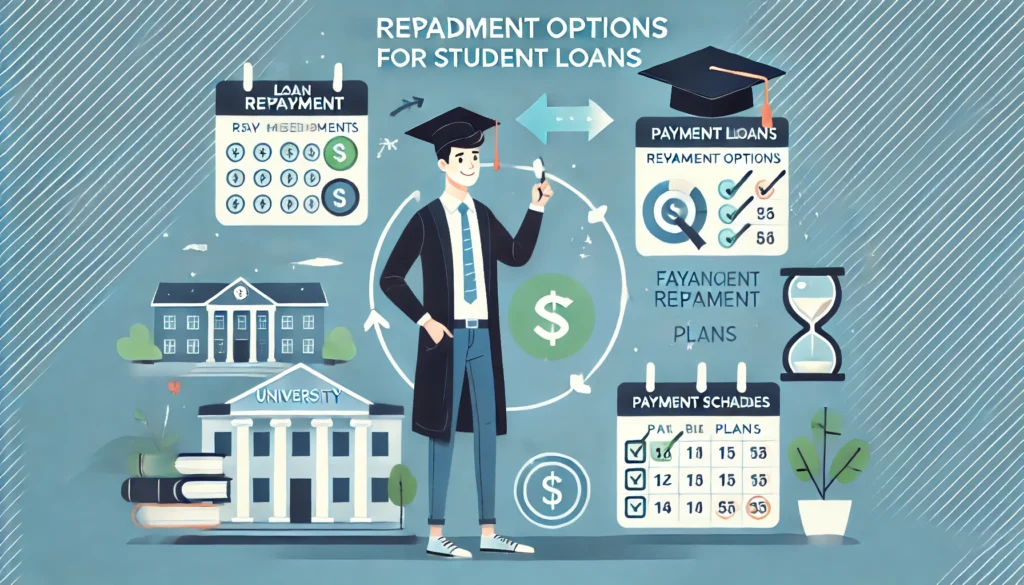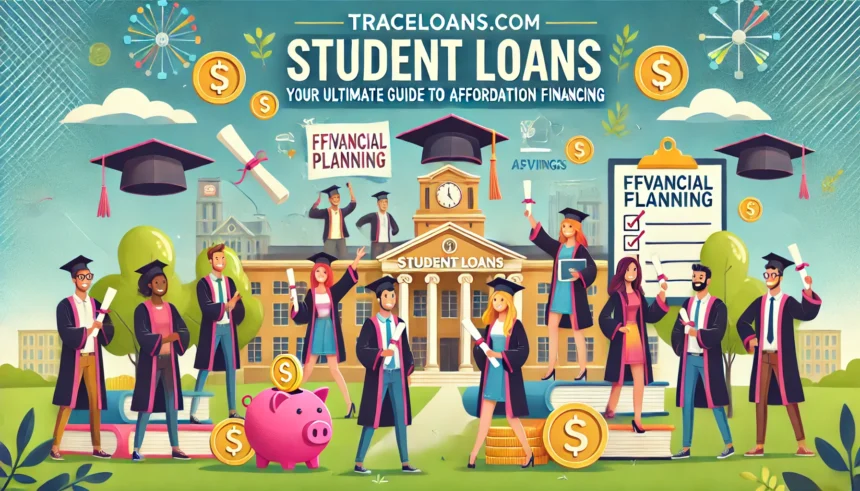Introduction To traceloans.com student loans
Education is one of the most valuable investments you can make in your future. However, the rising cost of tuition, books, and living expenses can make pursuing higher traceloans.com student loans a financial challenge. This is where student loans find application.They provide a lifeline for millions of students, enabling them to access quality education without the immediate burden of paying upfront. In this ultimate guide, we’ll explore everything you need to know about student loans, including types, how to apply, repayment options, and tips for managing your debt effectively.
What Are Student Loans?
Student loans are financial tools designed to help students and their families cover the costs of higher education. Unlike scholarships or grants, which do not need to be repaid, student loans must be paid back with interest over time. They can be used to pay for tuition, room and board, textbooks, and other educational expenses.
Student loans are typically offered by two main sources: the federal government and private lenders. Each option has its own set of terms, interest rates, and repayment plans, so it’s important to understand the differences before making a decision.
Types of Student Loans
1. Federal Student Loans
Federal student loans are funded by the U.S. Department of Education and are often the first choice for students due to their lower interest rates and flexible repayment options. Federal student loans come in numerous flavors:
- Available to both undergraduate and graduate students, direct unsubsided loans are not based on financial need. Interest builds from the moment the loan is taken out.
- Direct PLUS Loans: Designed for parents of dependent undergraduate students or graduate or professional students Their interest rates are more than those of other federal loans; they also call for a credit check.
- Direct PLUS loans are designed for parents of dependent undergraduate students as well as graduate or professional students. Their interest rates are more than those of other federal loans and they call for a credit check.
- Federal Perkins Loans: These are low-interest loans for students with exceptional financial need, though this program is no longer available to new borrowers.
2. Private Student Loans
banks, credit unions, and other financial companies provide private student loans.They can be used to cover gaps in funding after exhausting federal loan options. However, private loans often come with higher interest rates and less flexible repayment terms. They may also require a co-signer if the borrower has limited credit history.
How to Apply for Student Loans
1. Complete the FAFSA
The Free Application for Federal Student Aid (FAFSA) is the first step in applying for federal student loans. It determines your eligibility for financial aid, including grants, work-study programs, and loans. Be sure to submit the FAFSA as early as possible, as some aid is awarded on a first-come, first-served basis.
2. Review Your Financial Aid Offer
Once your FAFSA is processed, you’ll receive a financial aid offer from your school. This will outline the types and amounts of aid you’re eligible for, including federal student loans. Compare the terms and conditions before accepting any loans.
3. Apply for Private Loans (If Needed)
If federal loans aren’t enough to cover your expenses, you can explore private student loans. Shop around for the best interest rates and terms, and make sure to read the fine print before signing any agreements.
Repayment Options for Student Loans

Repaying student loans can feel overwhelming, but there are several options to make the process more manageable:
1. Standard Repayment Plan
Federal student loans have this as their default payback schedule.It involves fixed monthly payments over a 10-year period. While this plan typically results in higher monthly payments, you’ll pay less interest over time.
2. Income-Driven Repayment Plans
These plans change your monthly payments in response to family size and income. Among them are Revised Pay As You Earn (REPAYE), Pay As You Earn (PAY), and Income-Based Repayment (IBR). After 20 to 25 years of eligible payments, any outstanding balance might be forgiven.
3. Graduated Repayment Plan
This plan starts with lower monthly payments that gradually increase over time, usually every two years. It’s a good option if you expect your income to grow steadily.
4. Loan Forgiveness Programs
Certain professions, such as teachers, nurses, and public servants, may qualify for loan forgiveness programs. For example, the Public Service Loan Forgiveness (PSLF) program forgives the remaining balance on federal loans after 120 qualifying payments while working full-time for a qualifying employer.
Tips for Managing Student Loan Debt
- Borrow Only What You Need: It can be tempting to take out more than you need, but remember that every dollar borrowed must be repaid with interest.
- Make Interest Payments While in School: If possible, pay the interest on unsubsidized loans while you’re still in school to prevent it from capitalizing and increasing your total loan balance.
- Consider Refinancing: If you have good credit and a stable income, refinancing your loans at a lower interest rate can save you money over time. Refinancing federal loans with a private lender, however, means forfeiting access to federal advantages.
- Stay Organized: Keep track of your loan balances, interest rates, and repayment deadlines. Arrange automatic payments to prevent any missing.
- Seek Help if Needed: If you’re struggling to make payments, contact your loan servicer to discuss options like deferment, forbearance, or switching to an income-driven repayment plan.
Conclusion
Student loans can be a powerful tool for financing your education and achieving your career goals. By understanding the different types of loans, how to apply, and the various repayment options available, you can make informed decisions that set you up for financial success. Remember to borrow responsibly, explore all available resources, and create a plan to manage your debt effectively. With the right approach, you can invest in your future without compromising your financial well-being.
FAQs
1. How do subsidized and unsubsidized loans differ?
Subsidized loans are available to undergraduate students with financial need, and the government pays the interest while you’re in school. Unsubsidized loans are available to all students, but interest accrues from the time the loan is disbursed.
2. Can I apply for student loans without a co-signer?
Federal student loans certainly do not call for a co-signer.However, private lenders may require one if you have limited credit history or income.
3. What happens if I can’t make my student loan payments?
If you’re struggling to make payments, contact your loan servicer immediately. You could be qualified for an income-driven repayment schedule, forbearance, or deferral.
4. Are there any alternatives to student loans?
Yes, alternatives include scholarships, grants, work-study programs, and part-time employment. You can also consider attending a more affordable school or starting at a community college.
5. Can student loans be discharged in bankruptcy?
Discharging student loans in bankruptcy is extremely difficult and requires proving undue hardship, which is a high legal standard to meet.




